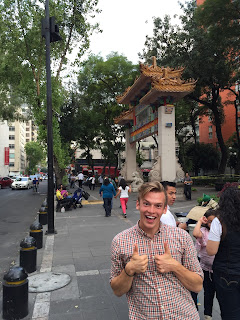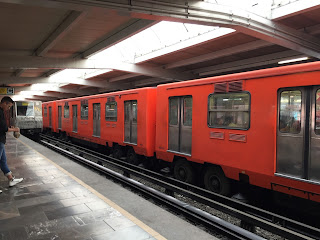 |
| KOTI workers |
KOTI started as municipal government initiative to create social and economic prosperity for women in the Amealco area. The livelihood of these women is based off of the products that they sell in the markets and at festivals. Currently, the shop only operates when they have revenue from sales and due to the structure of their business, it is not uncommon for them to return from the market empty-handed.
In addition to this blog serving as a community to share Mexican culture, Hecho's higher goal is to provide an avenue for Mexican artisans, like Laura, to sell their products online and create social and economic development for communities. While we recognize the good that other grassroots groups provide, we believe that too often these projects do not promise the results desired. Funds are dispersed, schools are built, or wells dug without true consideration towards the recipients' actual needs. These projects fail to achieve their potential. These managing organizations may also fail to utilize the enormous human capital available in these communities to help produce these products, missing opportunities to unite and enrich the community in a common purpose. Our approach with working with KOTI is to provide the opportunity for these women to reach a larger audience to sell their products online and create direct economic stimulation into the lives of their families and communities.
It's easy to think of a solution to Mexico's challenges from sitting in the United States. However, just like a mountain becomes more detailed as one gets closer, Mexico's strengths and weaknesses become more complex and intertwined as more is learned. Negative judgments or blurted out observations on Mexico are the norm when the only information absorbed is from CNN, Fox News, or tourist resorts. When we take time to develop friendships with Mexicans and become more educated on their reality, it's apparent that we are more alike than different than originally thought by realizing our goals, desires, and fears are similar, if not the same. We have a richer appreciation for Mexico, and the people who represent it, and as a result, find real solutions to real problems.
 |
| The workshop |
In addition to this blog serving as a community to share Mexican culture, Hecho's higher goal is to provide an avenue for Mexican artisans, like Laura, to sell their products online and create social and economic development for communities. While we recognize the good that other grassroots groups provide, we believe that too often these projects do not promise the results desired. Funds are dispersed, schools are built, or wells dug without true consideration towards the recipients' actual needs. These projects fail to achieve their potential. These managing organizations may also fail to utilize the enormous human capital available in these communities to help produce these products, missing opportunities to unite and enrich the community in a common purpose. Our approach with working with KOTI is to provide the opportunity for these women to reach a larger audience to sell their products online and create direct economic stimulation into the lives of their families and communities.
It's easy to think of a solution to Mexico's challenges from sitting in the United States. However, just like a mountain becomes more detailed as one gets closer, Mexico's strengths and weaknesses become more complex and intertwined as more is learned. Negative judgments or blurted out observations on Mexico are the norm when the only information absorbed is from CNN, Fox News, or tourist resorts. When we take time to develop friendships with Mexicans and become more educated on their reality, it's apparent that we are more alike than different than originally thought by realizing our goals, desires, and fears are similar, if not the same. We have a richer appreciation for Mexico, and the people who represent it, and as a result, find real solutions to real problems.








.svg/250px-Hidalgo_in_Mexico_(location_map_scheme).svg.png)



